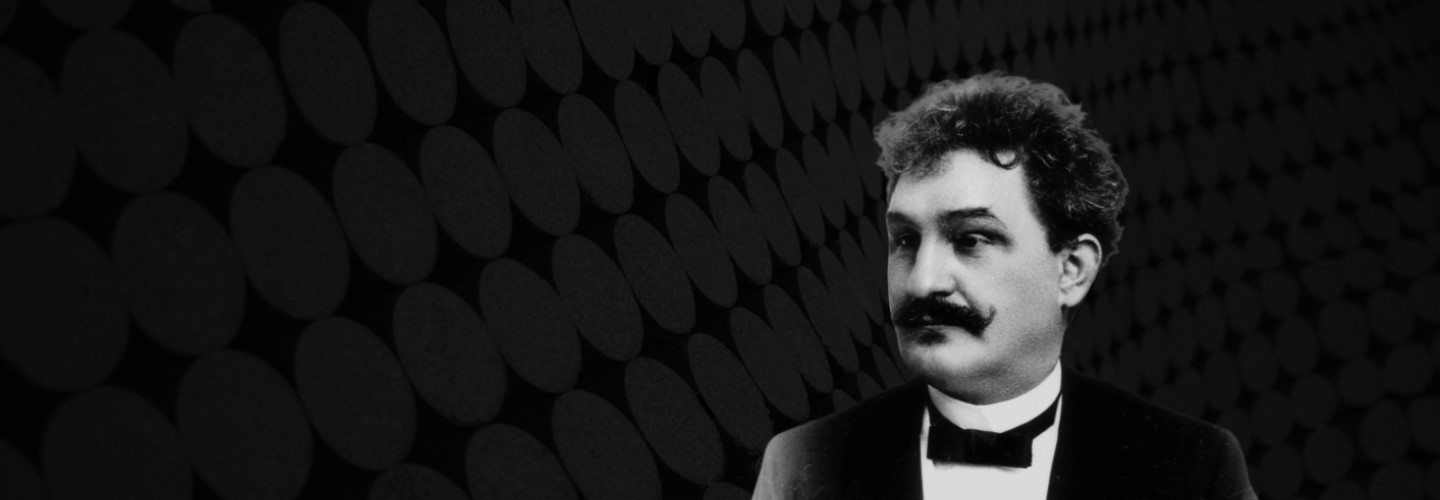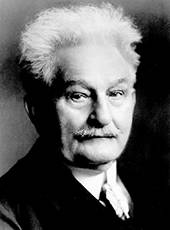

Leoš Janáček
The Makropulos Affair
Short instrumentation: 4 3 3 3 - 4 4 3 1 - timp, perc, hp, str - off stage: hn(2), tpt(2), timp
Duration: 31'
Bearbeitet von: José Serebrier
Instrumentation details:
1st piccolo (+4th fl)
2nd piccolo (+3rd fl)
1st flute
2nd flute
1st oboe
2nd oboe
cor anglais
1st clarinet in Bb
2nd clarinet in Bb
bass clarinet in Bb (+3rd cl(Bb))
1st bassoon
2nd bassoon
contrabassoon (+3rd bsn)
1st horn in F
2nd horn in F
3rd horn in F
4th horn in F
trumpet in C solo
1st trumpet in F (+tpt(C))
2nd trumpet in F
3rd trumpet in F
1st trombone
2nd trombone
3rd trombone
tuba
timpani
percussion
harp
violin I
violin II
viola
violoncello
contrabass
on stage: 1st horn in F
2nd horn in F
1st trumpet in F
2nd trumpet in F
timpani
Janácek - Die Sache Makropulos for orchestra
Translation, reprints and more

Leoš Janáček
Janáček: The Makropulos Case for orchestraOrchestration: for orchestra
Type: Studienpartitur
Sample pages
Work introduction
Some time ago Ronald Freed, the president of European American Music (the company that distributes the opera’s score in the United States), asked me if I would consider putting together an orchestral suite from The Makropulos Case, which no one had previously attempted. The more I studied the music, the more daunting the assignment seemed; but, at the same time, as I got deeper and deeper into the music, the challenge became too fascinating to refuse.
I could see that The Cunning Little Vixen had more or less invited such attention, because that work is filled with purely orchestral segments, which lend themselves to being tied together in a symphonic sequence. In The Makropulos Case, however, there is decidedly less in the way of orchestral music from which a suite might be made: except for the very brief Prelude, the entire score is interwoven between the quasi-spoken vocal lines and the rich orchestral commentary. Because of this consideration in particular, my task became more demanding, and more time-consuming, than writing an original composition, which for me tends to flow rather quickly.
At first I sought to immerse myself in Janácek’s artistic tendencies, his drastic harmonic changes and abrupt shifts of mood. This meant leaving the rough edges alone, or in some instances even accentuating them, rather than trying to smooth over all the transitions. Since orchestral passages did not present themselves, they had to be created a few bars at a time. Everything I needed was there in Janácek’s score, almost asking to be “grafted” in that manner, and I hope the result can stand as pure Janácek.
While Talich and Smetácek, in their Vixen Suite, made numerous changes in the original orchestration which struck me as logical and helpful, I decided not to make a single change in the orchestration of The Makropulos Case. While the work is extremely difficult to perform, by the time Janácek composed it he was writing with a very sure hand, and everything he set down works very well indeed, in respect to both his expressive purposes and sheer musical appeal. I have not altered a note in the harmony or the orchestration. Minor additions were made only in replacing the offstage chorus in Act III with a brass choir, which I feel adds an element of mystery, and giving a few of the vocal lines to solo instruments – which I did, I believe, in a way that actually transforms them into instrumental lines, rather than simply imitating the vocal ones. The musical sequence remains intact: the opera’s three acts here become the suite’s three movements.
Throughout the process I was encouraged by the feeling of spiritual kinship I had developed with Janácek’s music. Sitting at his desk in Brno, passing by his house daily on the way to the recording sessions, absorbing the air and spirit of his beloved Moravia, I felt the humility that comes over one in the presence of a genius of genuine, striking originality.
José Serebrier
June 1996
